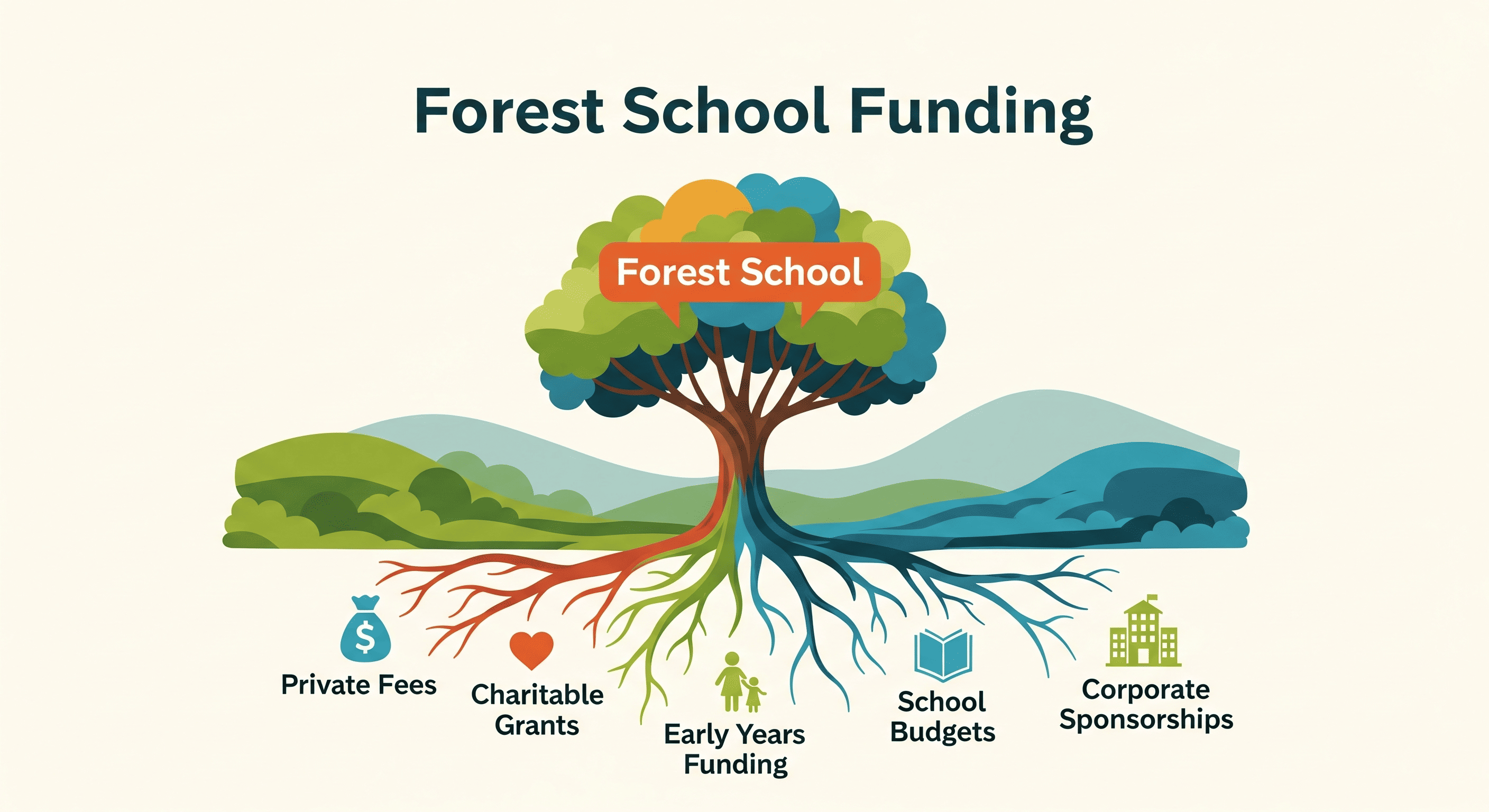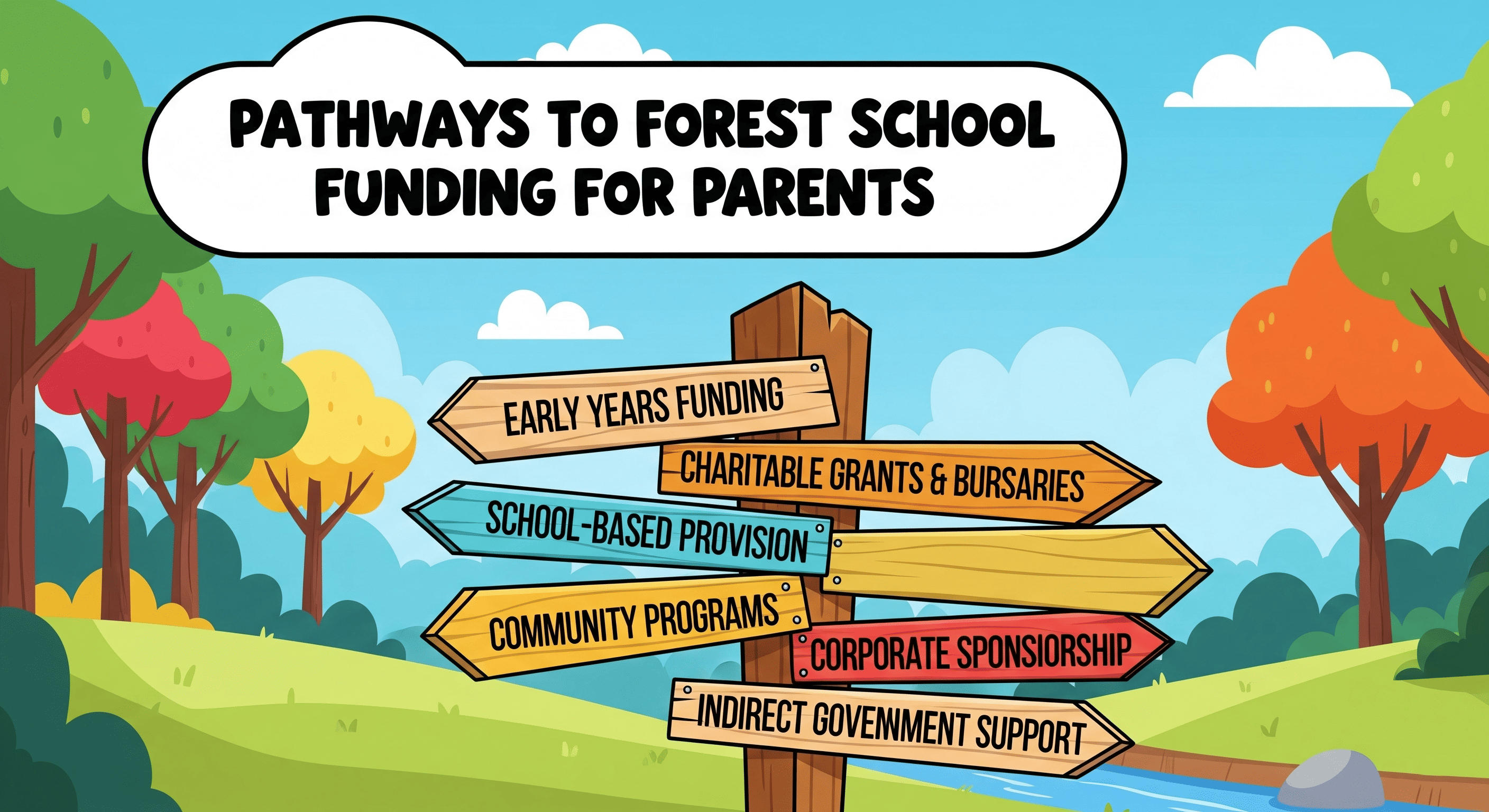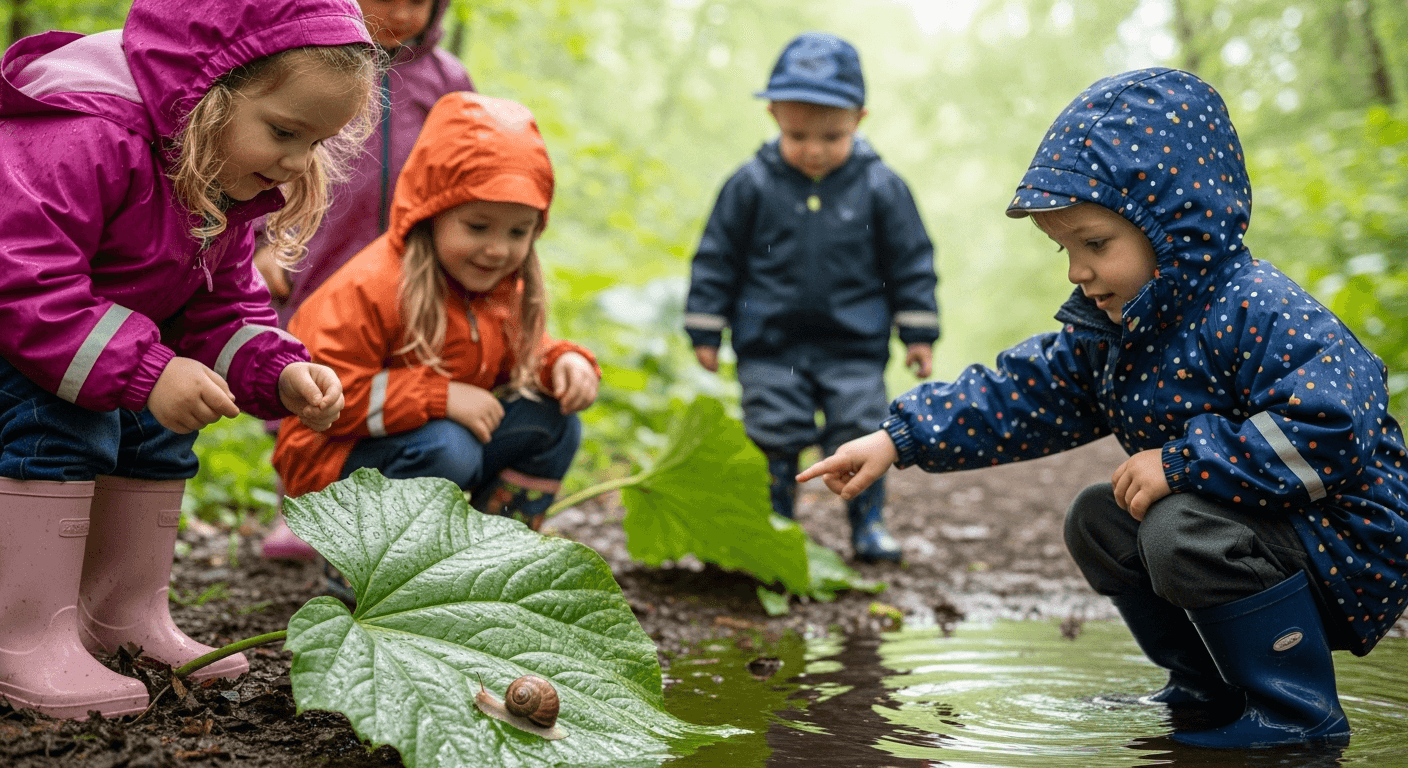· Education · 7 min read
Understanding Forest School Funding & Costs in the UK: A Parent's Guide
Discover the transformative world of Forest Schools in the UK, where children connect with nature and develop holistically. This introductory article explores their unique approach to learning and sets the stage for understanding their diverse funding landscape.

The UK’s educational landscape is increasingly embracing the profound benefits of Forest Schools. These unique outdoor learning environments offer a refreshing alternative to traditional classrooms, fostering a deep connection with nature and nurturing children’s holistic development, resilience, and self-confidence (WWF Schools for Nature Report). As more parents seek out these transformative experiences, questions naturally arise about their financial structure: “Are Forest Schools government funded?”, “How are they funded?”, and “What are the typical costs?”
This article serves as your initial guide to the world of Forest Schools in the UK, providing a general overview of their ethos and a first look at their diverse funding models. We’ll set the stage for a deeper dive into the specifics of costs and accessibility in subsequent articles in this series.
What is a Forest School? A Philosophy of Outdoor Learning
At its heart, Forest School is a long-term, child-led, and play-based approach to learning that takes place in a natural woodland or outdoor environment. It’s not just a one-off visit; sessions are regular, ideally weekly, over an extended period, allowing children to build a deep relationship with the natural world, their leaders, and their peers across different seasons.
Key principles of Forest School include:
- Holistic Development: Focusing on emotional, social, intellectual, physical, and communication skills.
- Child-Led Exploration: Encouraging curiosity and self-discovery rather than rigid, pre-planned curricular outcomes.
- Supported Risk-Taking: Providing opportunities for children to take appropriate risks in a safe, managed environment.
- Qualified Practitioners: Sessions are led by trained Forest School practitioners, often holding a Level 3 qualification, ensuring safety and quality.
Are Forest Schools Government Funded? The Full Picture
A common misconception among parents is that Forest Schools, like mainstream education, receive direct national government funding. The reality, however, is that there is no specific national government funding allocated for Forest School provision in the UK (Groundwork Greater Manchester). This is a crucial distinction that shapes the entire financial model of these unique educational settings.
Forest Schools, even when integrated into existing educational institutions, largely operate outside the direct state-funded school system’s core curriculum for their specialized outdoor learning programs. This independent operational nature means they are primarily responsible for securing their own financial resources. This fundamental lack of universal funding creates a significant challenge for accessibility, particularly for schools and pupils in disadvantaged areas or urban environments who might benefit most from regular access to nature (WWF Schools for Nature Report).
The growth of Forest School provision in the UK has, in many instances, taken on a more commercial character, leading to a rapid institutionalization and market-driven expansion of its practices (ResearchGate - Critique of Forest School). This trend means that the availability and structure of Forest School programs are often influenced by market demand and private investment rather than a public service model. Understanding this helps explain why parents frequently encounter fee-based models and why questions about “free” or “funded” options are so prevalent. This commercial aspect underscores the importance of transparent information for parents seeking quality provision.
Indeed, a survey of Forest School practitioners revealed that only 10% strongly agree they have the required funding, with “lack of money and time” being the biggest barriers to provision. This highlights a persistent funding gap that has not significantly improved since 2019. The absence of universal government funding for Forest Schools, combined with the often high costs of private provision, leads to a system where access is heavily dependent on competitive grants and targeted charitable initiatives. This results in unequal opportunities for high-quality nature-based learning for children from different backgrounds, disproportionately disadvantaging children from less affluent homes and urban environments (WWF Schools for Nature Report).
How Forest Schools Are Funded: A Diverse Landscape
Given the absence of direct national government funding, Forest Schools in the UK rely on a complex and varied patchwork of financial sources. This diverse funding landscape reflects the wide range of operational models and target audiences that different Forest School providers serve.
Here’s a breakdown of the primary funding streams:
| Source/Category | Description | Key Examples/Notes |
|---|---|---|
| Private Fees | Direct payments from parents for attendance. | Charged per-session, per-day, or as termly/annual fees by independent Forest Schools, nurseries, and private schools. |
| Charitable Grants & Lottery Schemes | Funding from non-profit organizations and lottery funds supporting outdoor education, environmental conservation, or disadvantaged groups. | Includes People’s Postcode Lottery (e.g., £300,000 to Wildlife Trusts for urban Forest Schools), National Lottery Awards for All (£300-£10,000), Garfield Weston Foundation, CLA Charitable Trusts (up to £5,000 for countryside access)Country Trust, Ernest Cook Trust (£1,000 for state secondary/special schools’ outdoor learning). Discover Funding Options with Wild Ideas. |
| Early Years Funding | Government-backed “free early education” hours for eligible 2, 3, and 4-year-olds. | Typically 15 or 30 funded hours per week for 38 weeks (570 hours annually). Parents may incur “enhanced provision” charges (e.g., ~£2.50/day) for specialist care. Early Years Pupil Premium (EYPP) provides additional funds for disadvantaged children. |
| Corporate Sponsorships & Bursaries | Funding from businesses or school-specific financial aid programs. | Organizations like Groundwork seek corporate partners to sponsor Forest School provision for specific schools (e.g., £8,750 for 10 pupils for a full academic year). Independent schools often run bursary funds to provide means-tested support). |
| School Budgets | Costs absorbed by existing operational budgets of state or private schools. | When Forest School is integrated into the curriculum, parents typically do not incur an additional direct fee. However, provision can be limited by budget constraints and competing priorities. |
| Indirect Government Support | Department for Education (DfE) grants aimed at enhancing outdoor learning environments more broadly. | The National Education Nature Park programme has allocated over £12 million for schools, nurseries, and colleges to purchase gardening/fieldwork equipment and transform “grey” spaces into green areas, indirectly supporting outdoor learning where Forest School activities might take place. |
This reliance on a diverse, often competitive, funding system contributes to a significant socioeconomic disparity in access to nature-based learning. Data indicates that access to nature varies, disproportionately disadvantaging children from less affluent homes and urban environments. The absence of universal government funding for Forest Schools, combined with the often high costs of private provision, leads to a system where access is heavily dependent on competitive grants and targeted charitable initiatives. This results in unequal opportunities for high-quality nature-based learning for children from different backgrounds. Parents in less affluent or urban areas may face greater challenges in finding affordable Forest School options unless specific charity-funded programs or DfE-supported initiatives are available in their locality. This highlights the importance of not just finding a Forest School, but specifically searching for funded places or programs designed to increase accessibility.
The Enduring Value: Why Forest School Matters
Despite the financial considerations, the value of Forest School extends far beyond its monetary cost. It offers profound benefits that contribute to a child’s long-term well-being and development:
- Enhanced Emotional Well-being: 99% of practitioners agree that outdoor learning positively impacts emotional well-being, fostering confidence, resilience, and reduced stress (The Practical Forest School Survey 2022).
- Improved Social Skills: Similarly, 99% of practitioners report that outdoor learning helps children develop crucial social and communication skills.
- Intellectual Growth: It stimulates curiosity, problem-solving, and a deeper understanding of the natural world, with research suggesting nature-based instruction can outperform traditional classroom learning (WWF Schools for Nature Report).
- Physical Development: Active play in natural settings supports gross and fine motor skills (Learning through Landscapes).
- Connection to Nature: Crucially, Forest School helps children form a lasting appreciation for the environment, a vital connection often lacking in modern childhoods, especially for urban children (Wildlife Trusts - People’s Postcode Lottery Funding).
The demand for outdoor learning and Forest School provision has been steadily increasing, with 75% of practitioners reporting increased demand for outdoor sessions and 61% for Forest School specifically. This growing recognition underscores its importance as a vital investment in a child’s foundational development.
What’s Next in Our Series?
Understanding the general landscape of Forest Schools, the nuances of their government funding, and their diverse funding models is just the beginning. In the upcoming articles in this series, we will delve deeper into the specific questions parents frequently ask:
- How Much Do Forest Schools Cost? A Comprehensive Guide: We’ll break down typical costs, explore pricing factors, and provide examples to help you budget.
- Is Forest School Free? Exploring Accessible Options: We’ll uncover the pathways to reduced costs and free access, including Early Years funding and charitable support.
Stay tuned to our blog for the next installment, where we’ll continue to empower you with the knowledge to find the perfect outdoor learning adventure for your child!



